
- Home
- Age
- 1800-1849 (10)
- 1850-1899 (834)
- 1867-1912 (4)
- 1868 - 1912 (5)
- 1868-1912 (38)
- 1870-1930 (7)
- 1880-1912 (8)
- 1880-1920 (4)
- 1890-1910 (6)
- 19th Century (20)
- 20th Century (6)
- Ca 1900 (6)
- Early 20th Century (48)
- Late 19th Century (30)
- Meiji (15)
- Meiji Period (8)
- Post-1940 (343)
- Unknown (95)
- 1900 (10)
- 1900-1940 (634)
- ... (1922)
- Culture
- Maker
- Ando (41)
- Ando Cloisonne (20)
- Ando Jubei (27)
- Ando Jubei Nagoya (7)
- Ando Workshop (22)
- Cloisonne (21)
- Gonda (5)
- Gonda Hirosuke (6)
- Hiroaki Oota (8)
- Japan (36)
- Japanese (10)
- Japanese Craftsman (159)
- Kumeno Teitaro (9)
- Sato (27)
- Shuzo (9)
- Tamura (8)
- Unknown (192)
- Unknown Artist (15)
- Unsigned (20)
- Yamamoto (6)
- ... (3405)
- Material
- Pattern
- Type
Japanese Cloisonne Enamel Tray with Satsuma Style Panel Pictured In Book (PIB)
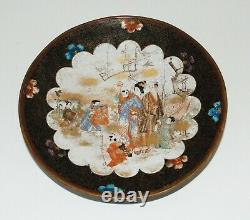
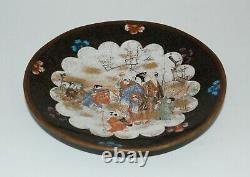





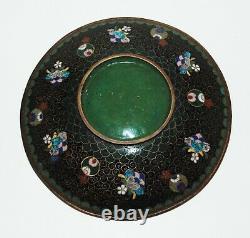
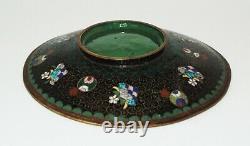
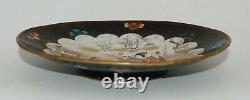
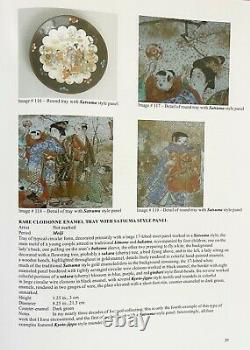


Here is very rare Japanese cloisonne enamel tray with a Satsuma style inset panel. In my nearly 40 years of focused collecting, I have only encountered five examples this type of work, which tells me that this technique was very difficult to produce. The highlight of the work is definitely the inset Satsuma style panel of a young couple dressed in traditional attire, a kimono (for the lady) and hakama (for the gentleman).
Their children are pursuing various playful activities. The round tray is in remarkably good antique condition considering its age and the rarity of the technique. There are a large number of very light hairlines throughout, and this definitely is the result of the differing substrate materials during the firing process that had their respective temperature characteristics. Early on, I realized the rarity of this technique and was lucky to have been able to acquire all of the examples I encountered during my collecting career. All examples in the collection for this technique exhibit the numerous fine hairlines on both the Satsuma style panels and specific areas in the cloisonne enameled borders. Please refer to the images provided. This exact piece is illustrated on page 37 in Chapter 6, "Imbedded Cloisonne Enamel" in the reference book entitled "Japanese Cloisonne Enamels; A Private Collector's Notes and Reference Guide, " by Gary Yoshino. Overall, a bright and vibrant example of a very rare technique that can be considered experimental due the very few examples that have survived over the years. This seldom encountered piece would be a great addition to a Japanese cloisonne collection. The diameter of the round tray is approximately 8.25 inches. The height of the round tray is approximately 1.5 inches. Due to the fragile nature of this tray, this piece will be double boxed and packed with tremendous care. This item is in the category "Antiques\Asian Antiques\Japan\Vases".The seller is "gyassociates" and is located in this country: US. This item can be shipped to United States.
- Region of Origin: Japan
- Age: 1900-1940
- Primary Material: Cloisonne
- Original/Reproduction: Antique Original
- Color: Multi-Color

